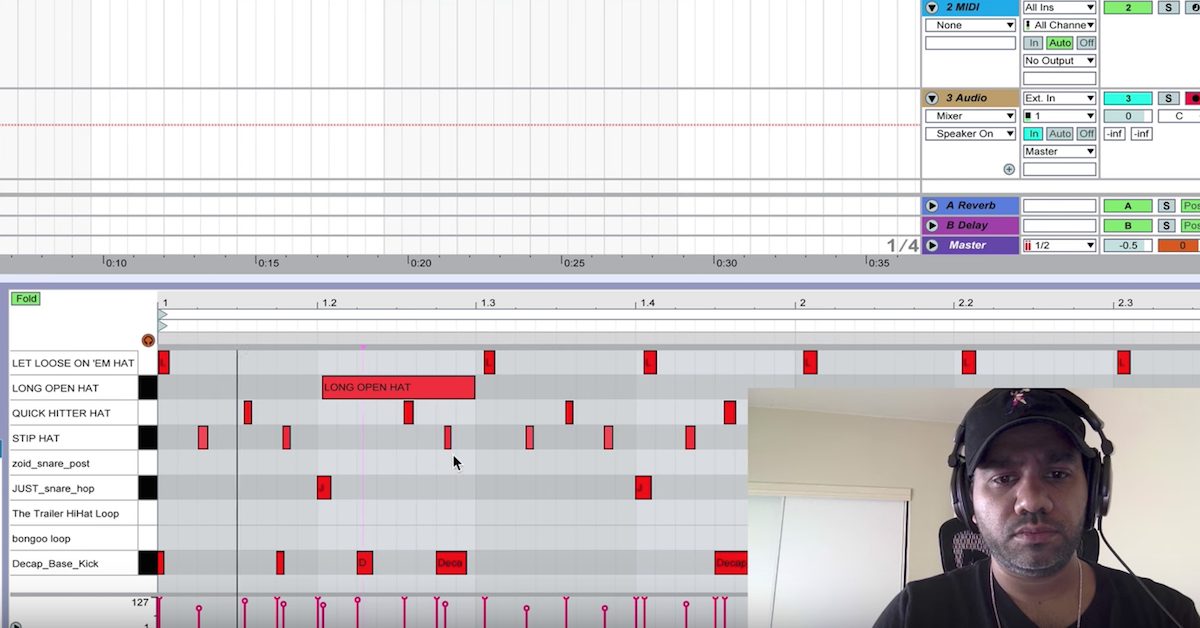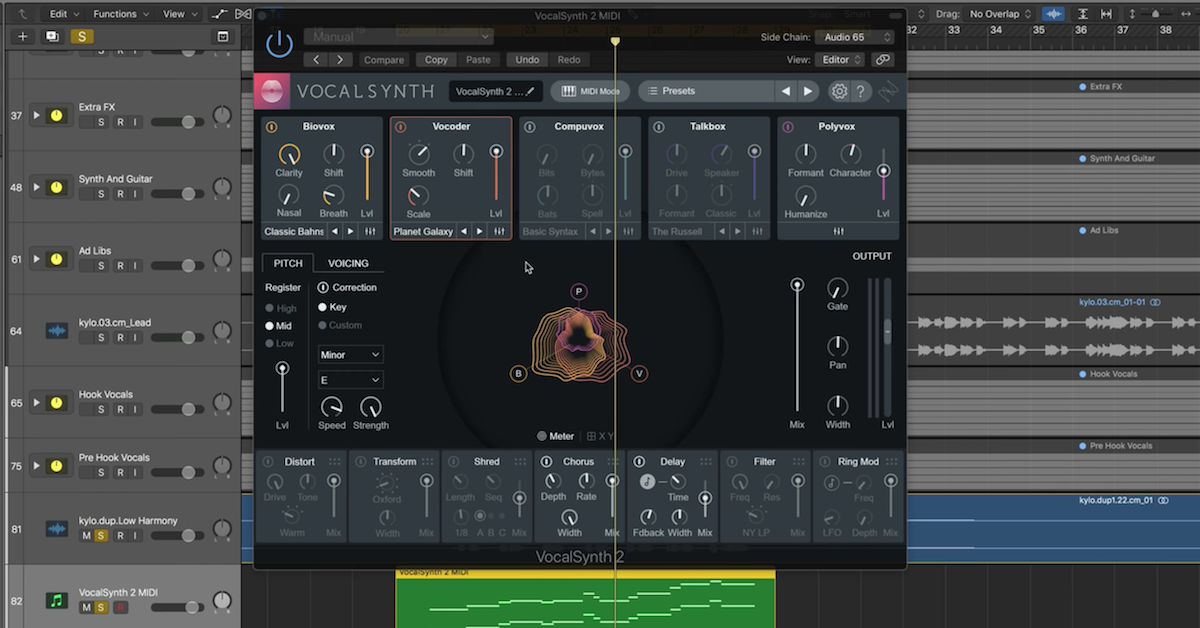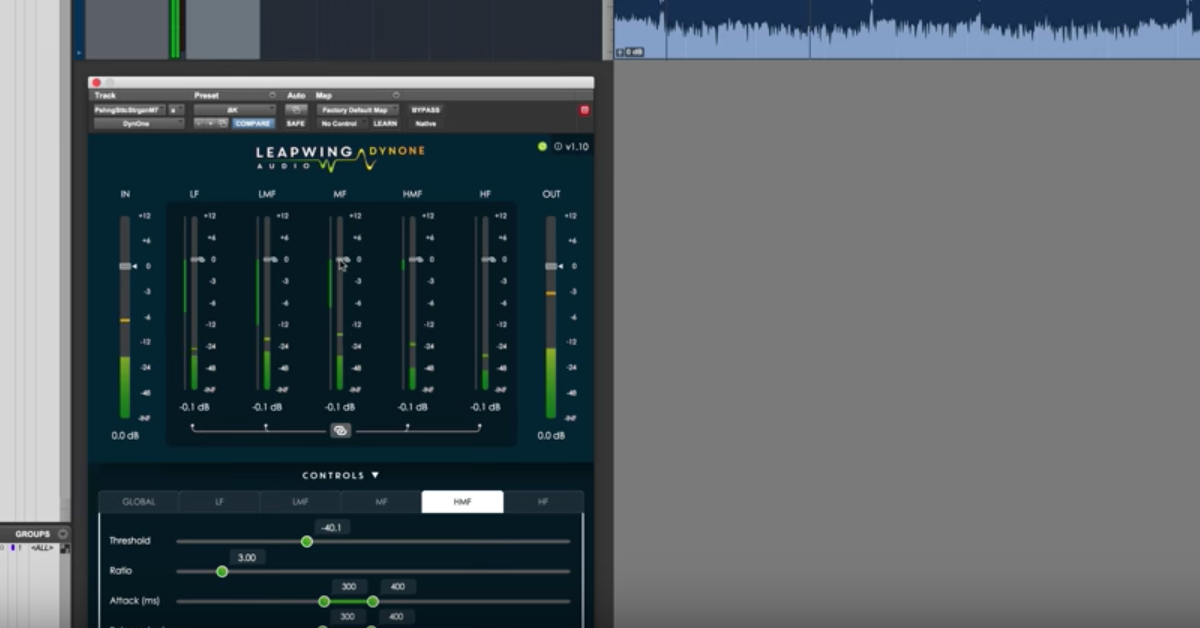Tips for Making a Dynamics Map for Your Song
Article Content
Dynamics are a huge part of production. It’s something a producer must keep in mind at all times. Many fall into a trap of not considering the dynamics roadmap before they hit record.
A Little Lost
It’s really hard to make up for lost dynamics later in the game. You never really get it back. The velocity of which an instrument is played can subliminally convey emotion.
You’ll notice the sound of an instrument changes based on the velocity to which the performer plays. Using automation during mixing can help, but isn’t going to express the same thing.
Visions of Johanna
At what point should we be considering the dynamic makeup of a song?
In pre-production of course! There are many important things that come from pre-production.
It’s during this time that some of the most important decisions are being made about a song. Decisions that are going to be hard to change later: key signature, tempo, arrangement, dynamics, etc.
Plow You Under
It’s not in your best interest to plow through a song without thinking about its high and low points.
A great song often has more than two dynamics in it.
Amusement Park
Fancy yourself at an amusement park. You’ve decided you’re going to ride the roller coaster. Even the most gentle of roller coasters have more than one decline. There’s usually a steep one and then several varied smaller hills.
You need this contrast. Productions need contrast just as much as roller coasters.
Imagine if you got on the roller coaster and it did nothing but traveled a straight line. How boring would that be?
An Occasional Dream
There are exceptions to everything. I make a life of them. Sometimes the exact effect you’re looking for is a dynamically straight-lined production. This can be a statement on its own. However, it has to be the right type of song. It requires the same decision in pre-production as dynamic mapping.
Dynamic Graphing
So what is dynamic graphing? It’s a system I like to use to display the variance in dynamics for a song.
It’s a unique chart that the musicians will receive to accompany any other chart they have.
You may be wondering why I don’t just use traditional dynamic markings on the charts. I don’t find them very inspiring.
Imagery will have more influence than ‘fff’ on a chart. The musicians are also less likely to see the roller coaster ride of the dynamics when they’re buried below the bars.
When I make a dynamics graph, the musicians not only see the flow of dynamics but get a feel for them immediately.
Bus Lines
The idea here is that everyone gets on the bus together. Things move fast in a session.
Often when musicians come in, I don’t have extremely specific charts for them. I have an idea of what I want them to play as well as lead sheets.
Largely, I work with musicians that I respect and creatively admire. I’m intentionally leaving space for them to bring their “thing.”
Having a chart and dynamic graph means they’ll spend less time translating the song. They’ll be able to jump right in with ideas and immediately be on the same page dynamically.
Techno Bubble
Many great things come from the technological advancements in recording. One thing it’s stripping is pre-production editing and dynamics.
We tend to work backward nowadays. Now more than ever, a lot of artists play most of the instruments on their records. This a great advantage with one drawback.
Sometimes patchwork production neglects dynamics. You can counter this by creating a dynamics graph for yourself before you hit record.
You should be using pre-production even when it’s you by yourself in the studio. You should be able to get a sense of the dynamics from the first instrument you record.
If you’re not implying the dynamics on that acoustic rhythm guitar track, it’s going to be hard to get the surrounding instruments to sound dynamic around it.
Remember what I said about velocity and dynamics on an instrument conveying emotion?
The Reveal
Here’s an example of what a dynamics graph looks like.
You’ll notice it leaves some room for interpretation.
The concept is to get the musicians traveling together but also allows them to balance out each other’s interpretations of those dynamics.
By looking at the graph, they’ll see the way the song travels. They know what’s coming up and will make different creative choices instead of going in blind. Great musicians have telescope vision.
Example 1
You can see the steady climb of the song until the bridge. The bridge comes down in dynamics and builds into the last chorus.
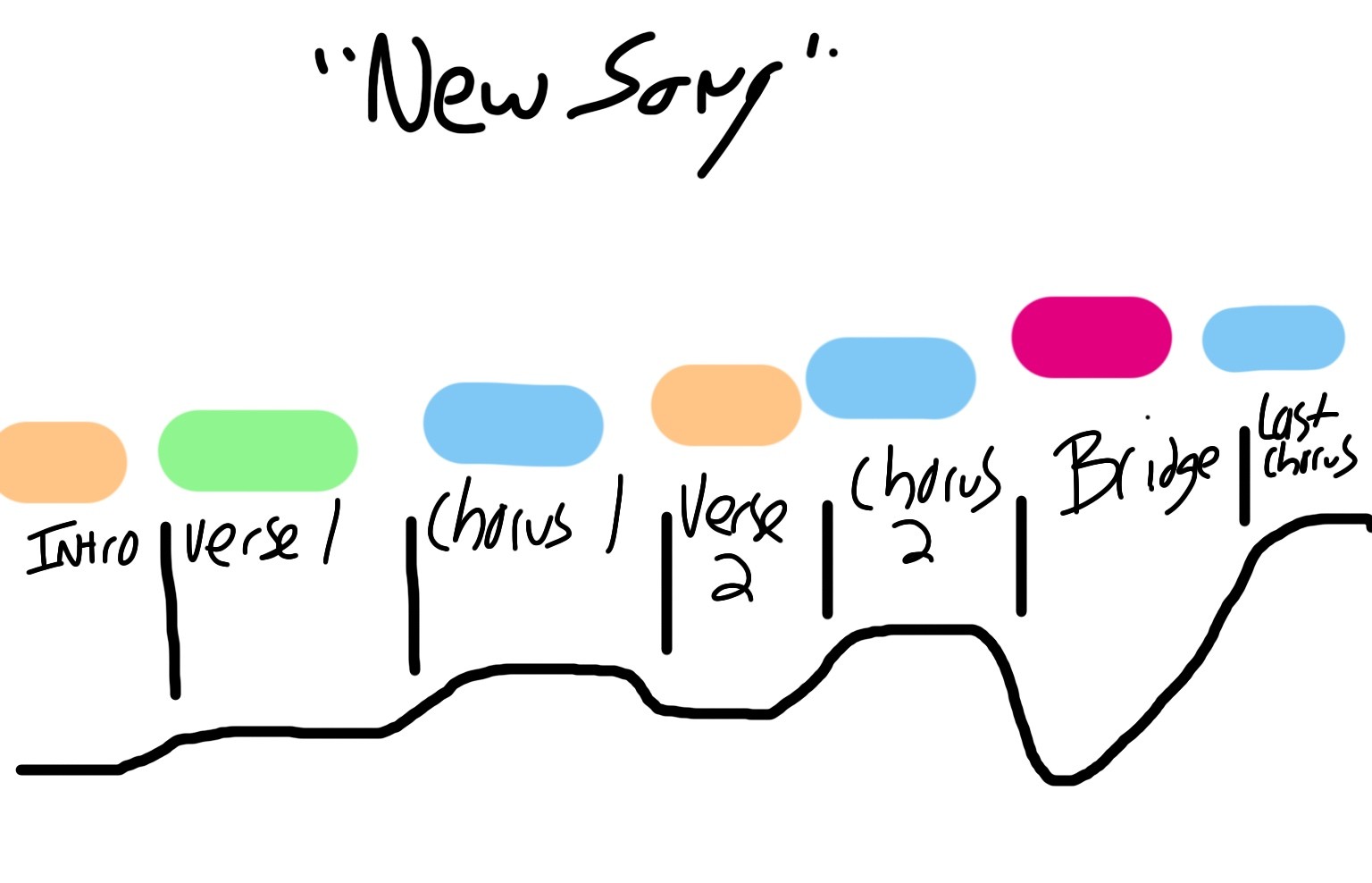
Example 2
You’ll see the first half of the song goes back and forth dynamically. That is until the bridge starts a climb that leads to a high point outro.
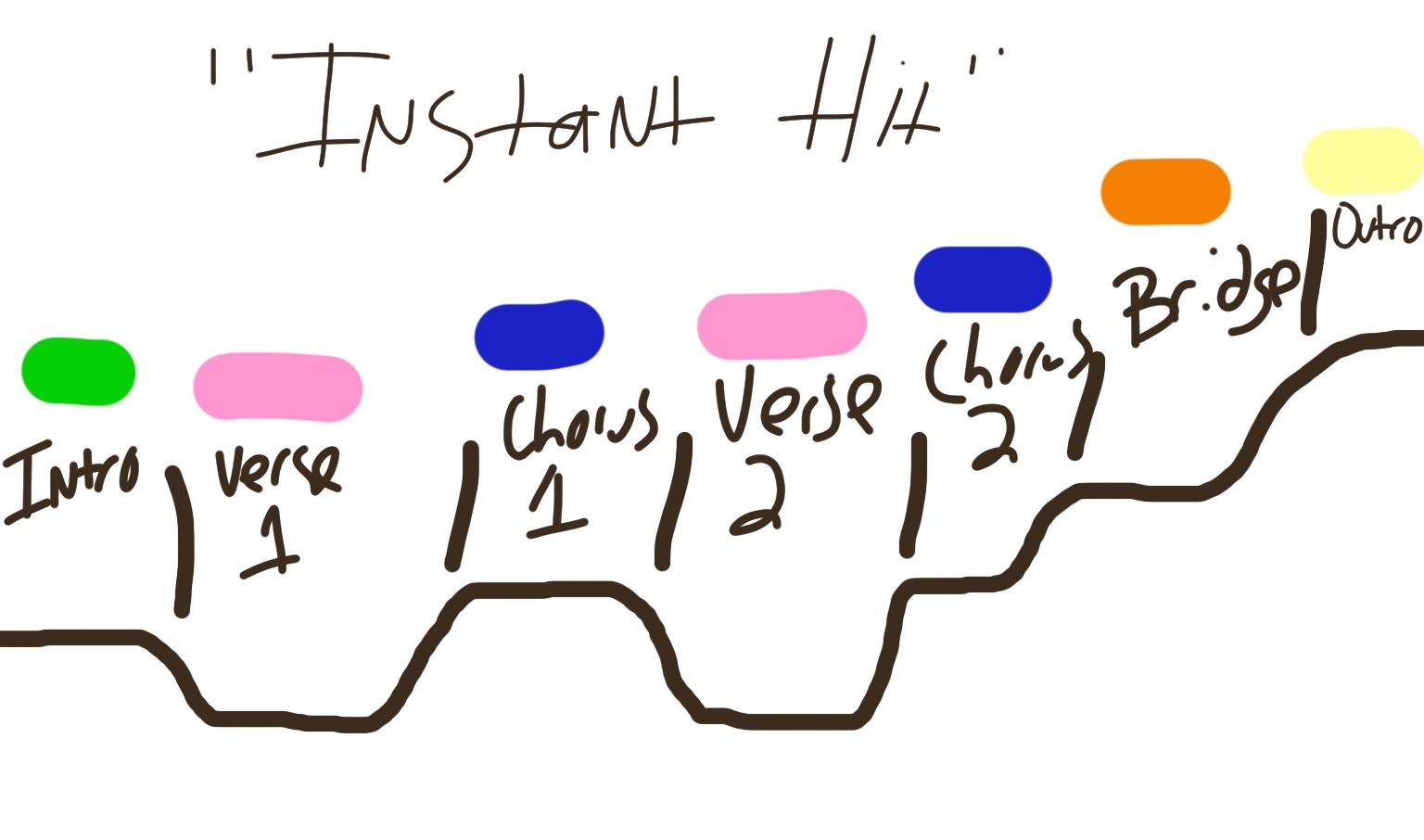
You’ll notice I also used color to mark the sections. These are just two basic dynamics structures. The options are limitless.
Just by looking at this dynamics map, you get an image in your head about the “ride” you’re about to go on. Creativity is sparked by imagery.
The small details like this will also make mixing easier as the band is partially mixing themselves.



